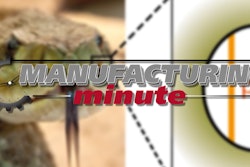
 Megan Ray Nichols
Megan Ray NicholsWhile the common internet is currently experiencing the highest amount of usage since its inception, there's another network that has piqued the interest of industry experts as of late. The Internet of Things, or IoT, is meant to facilitate an increasing amount of machine-based learning, connectivity and system-to-system communications.
This framework, which is now in a state of hurried and constant development, has the potential to impact technologies from nearly every professional industry. In fact, IoT is already benefiting aircraft manufacturers by supporting big data analyses, streamlining communications and providing greater revenue streams for airlines and their partners.
Manufacturing and Assembly
Workers within the sector of aerospace manufacturing stand to benefit immensely from IoT. As some reports point to a market of $13,481.17 million by 2020, it's certainly a lucrative opportunity for proactive and bright entrepreneurs.
Developers with Airbus began using IoT several years ago. By implementing RFID tracking chips during the parts manufacture and assembly processes, the company was able to streamline day-to-day operations and drive production quality.
Airbus is even utilizing IBM's highly touted supercomputer, known as Watson, to support next-gen data collection and analysis initiatives. Considering the fact that every flight of the A350 generates and collects approximately 250 gigabytes of raw data, the sheer volume of data in question is astounding.
Airbus isn't the only one capitalizing on IoT. JetBlue has streamlined the entire check-in process on behalf of its passengers by offering increased automation, print-at-home boarding passes, and improved baggage handling. Delta Cargo is now offering pet-tracking services that let owners monitor their furry friends’ travels, and AirAsia has implemented a number of cost-saving strategies thanks to IoT.
Panasonic and Honeywell Aerospace are also taking full advantage of new connectivity and data collection strategies. By gathering and analyzing data from various sources, including aircraft engines, power units, sensors and other avionic equipment, the companies now have much more information to work with when designing new components and systems.
Honeywell also integrated a plethora of IoT-inspired devices into its brand new Boeing 737 fleet of commercial aircraft. Next-gen navigation radios, 3D weather radar technology, automated traffic collision avoidance and improved flight data collection are among some of the most notable advancements.
National Defense
IoT is also useful in military applications. By developing a vast network that collates data from various satellites, drones, sensors and personnel in the field, our military leaders are better poised to share information, collaborate on missions and minimize collateral damage. Moreover, we're able to react to changing conditions, reconfigure objectives and adapt to unexpected scenarios in a manner that are far quicker and more efficient than those without IoT connectivity.
Military applications that rely on radio frequency welding are also affected by greater IoT integration. By connecting welding hardware to IoT, operators can gather and share information, provide greater service and increase visibility across the board. ESAB has even established a dedicated WeldCloud to help with the integration process.
Passenger Comfort and Safety
Aircraft passengers will also benefit from increasing integration between IoT and modern planes. In-flight entertainment and connectivity suites, which are responsible for delivering in-flight movies, advertisements and other content, will see some of the most obvious and visible upgrades.
Onboard Wi-Fi, high-definition electronics and the ability to tap into guest networks through personal smartphones and devices are now commonplace on many flights across the U.S. Online gaming, and other forms of entertainment are also regular features of the in-flight experience.
It's nice to have the luxury of such entertainment options while flying, but IoT has other applications in and around the airport, too. In some cases, luggage marked with digital baggage tags allow passengers to track their belongings throughout the entire process. Not only can this ease some of the stress that is commonly associated with commercial flights of today, but some apps are also able to notify you, either via email or SMS when your baggage has arrived at its destination.
Miami International Airport recently embraced IoT to ease the burden of travel on behalf of tens of millions of annual passengers. By releasing an official app that lets users receive updated flight information in real time, the popular flight hub was able to connect passengers with nearby restaurants, lodging, and other services.
An Evolving Technology
The concept of smart, interconnected devices is nothing new — manufacturers have been toying with such hardware for decades. However, IoT represents the industry's attempt to standardize integration and communications among modern consumer technology of all kinds. Although it might take some time for us to become accustomed to the ever-increased use of personal information, everyone can benefit from the levels of personalization, customization and service continuity that IoT has to offer.
Megan Ray Nichols is a freelance science writer.






















